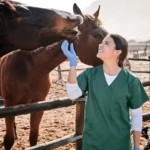An essential modality of agricultural practice, salt licks remain the most effective means of ensuring animals get a shot supply of the nutrients they require for survival. These mineral blocks they come in form small block which is composed of salt and some trace element that is important for animal’s health with intent as supplements for the animal feed. In view of that very well health will discuss on the dynamics in the use of salt lick and its utility, nutritional restoration potentials, consequential health of the animal and productivity.
Why Salt licks are vital in the management of stock
Like in the case of human beings minerals are needed by the livestock in order to maintain the health of the animal and to boost the various functions that both the animals’ body and organs were designed to carry out. Most of these rumen degradable and rumen fermentablecarbohydrates, proteins, fats and amino acids occur naturally in forage and feed sources but may be low in sodium, calcium, magnesium and trace minerals such as Zinc and selenium. It is about this point that salt licks make their appearance. They keep the animals supplied with these nutrients as Salt licks also serve to offer animals an assured concentration of the nutrients.
Salt licks are very useful in grazing operational systems because most of the animals depend on pastures for feed. Oftentimes pastures have low concentrations of border line forage minerals, because of the soil’s inability to supply the needed minerals or as a result of fluctuating changes in forage quality over the years.
Health Benefits of Having Salt Licks
Thus, the use of salt licks goes beyond pure supply of minerals to the animal body. Each of these blocks plays a role in areas related to livestock health, promoting improvement in their lives, and raising their yield. Some of the key benefits include:
Stronger Bones and Teeth: These minerals keep off illnesses such as osteoporosis and lameness hence the animal is always on its feet and productive.
Enhanced Immunity: Some of the micronutrients like zinc and selenium are well understood to have immune stimulating properties. These minerals support the body of livestock in fighting diseases and their ability to recover allows for a decrease in mortality.
Better Reproductive Health: They are particularly useful for maintaining the hormonal balance and overall reproductive performances. Iodine and magnesium, copper and selenium are indispensable items for fertility, proper pregnancy course and successful delivery.
Reduction of Pica: Pica is a behavioral disorder that manifests in animals in that they chew items that include wood and soil, hence results from mineral deficiency disorders.
The Way that Salt Licks Foster Normal Actions
A major selling point of salt licks is the unaltered reflexive behaviours they promote in animals. Animals naturally chew these blocks to satisfy the mineral requirements they have. This self regulating behavior not only helps them satisfy the craving but also make sure they have taken the right amount of minerals without having to worry about the side effect of taking too much supplements.
Also, the act of licking assists in provoking the salivary gland secretion, this is especially so for the ruminant in the animal kingdom such as cattle, sheep and goats. Saliva is another way of neutralizing the effect of acidity in the stomach and helps to avoid cases such as bloat. Therefore, it will commonly be a feature of markets that livestock use available salt licks to display better appetite and digestion.
salts are important commodity in the market today, they come in different types and brands ,there are some guidelines to follow when using salt licks.
Practical tips for farmers
Placement: Place the salt licks in points of congregation such as spots near water treatment troughs or places where feed is offered.
Quality: Select the right type of mineral blocks that meet your animals need for the specific type of livestock breeding. Some of the blocks are for special reasons such as to support lactating animals or animals with low immune systems.
Weather Protection: This helps avoid wastage and make the blocks most effective for the longest time possible.
Monitor Consumption: He should take precautions to look at how frequently the livestock are using the salt licks.
The Economic Effect of Dry White Salt
This means that besides the role they play in animal health, farmers have a lot to benefit from salt licks. Healthy stock produce more milk, meat, or wool and in a way are more efficient than cheap unhealthy ones or sick stock. Also, animals on correct feeding have fewer incidences of diseases and reproductive problems hence fewer vet bills and increased income.
Another practice in livestock management that is also cheap in terms of treatment of the mineral deficiencies is use of salt licks. They have a extended shelf life and simplicity of use and this makes it easier for farmers to consider them cheap strategies.
Environmental Considerations
Consumption of raw salt licks increase animal health status and feeding efficiency on the grazing animals, hence increasing productive use of the pastures without necessarily requiring enhanced feed supplements.
Conclusion
They are effective and easy to use method of enhancing general wellbeing of the livestock. Acting as moderators of some essential nutrients, improving the digestive processes, immunological and reproductive systems, these mineral blocks have become indispensable elements of the modern agricultural practice. All these reveals the advantage of designed simulations in that they mirror true behaviours and enhance economical performance. To many farmers desiring to have healthier animals in order to boost their production, using salt licks as part of their management practices is enhancing agriculture. Learn More About Animal Health visit Very Well Health.



